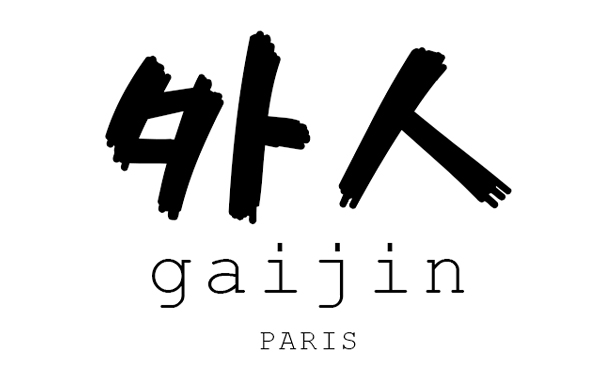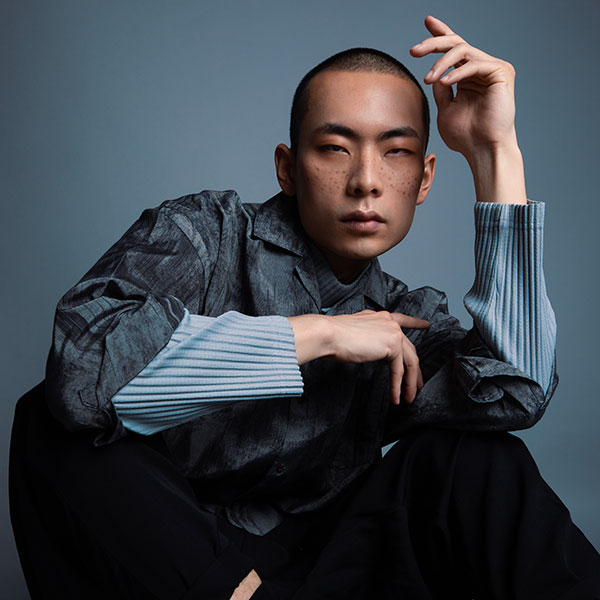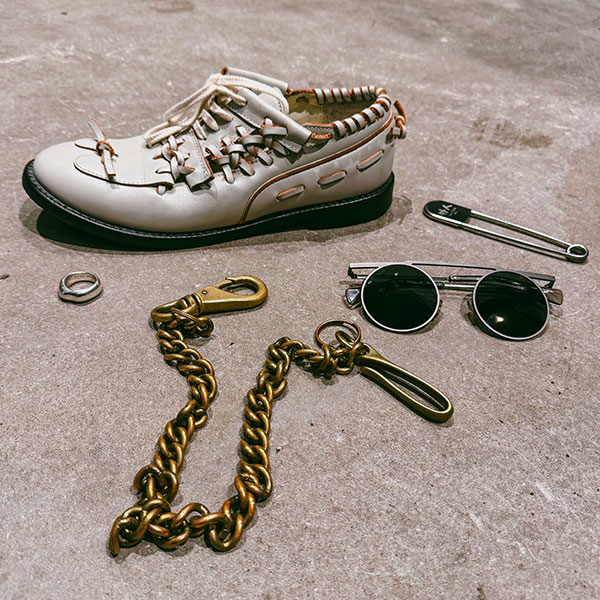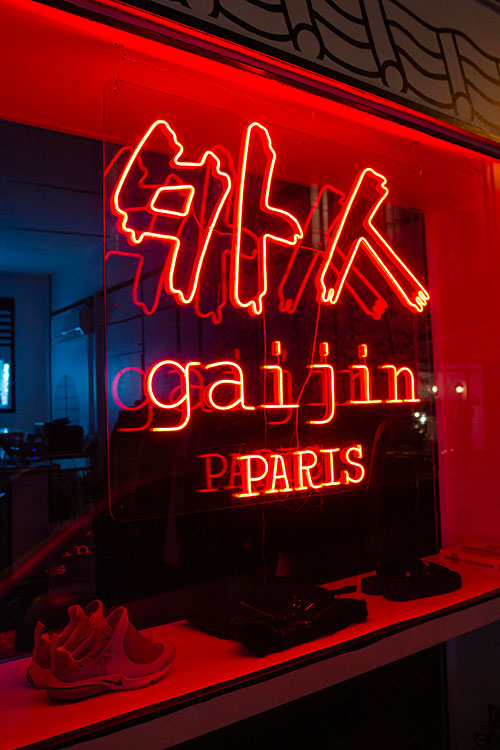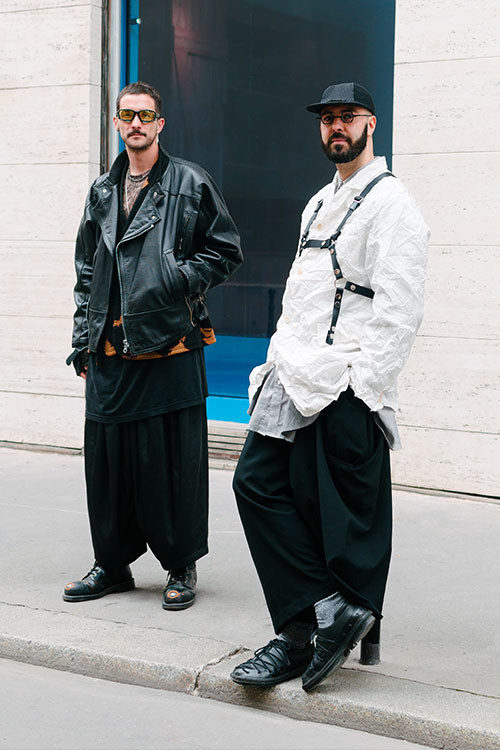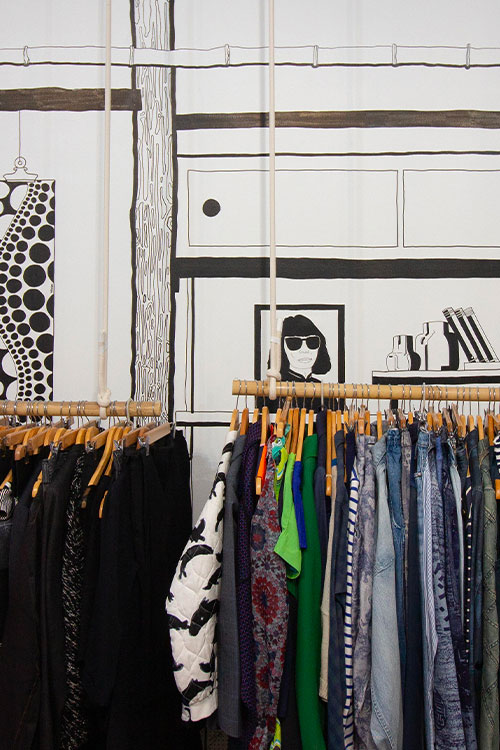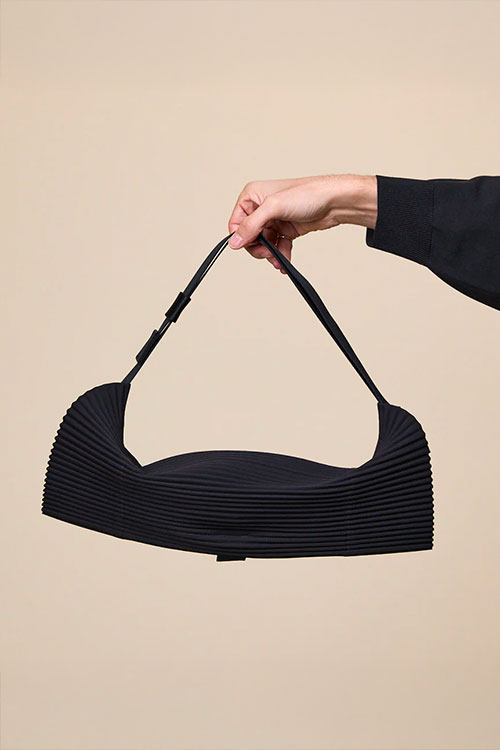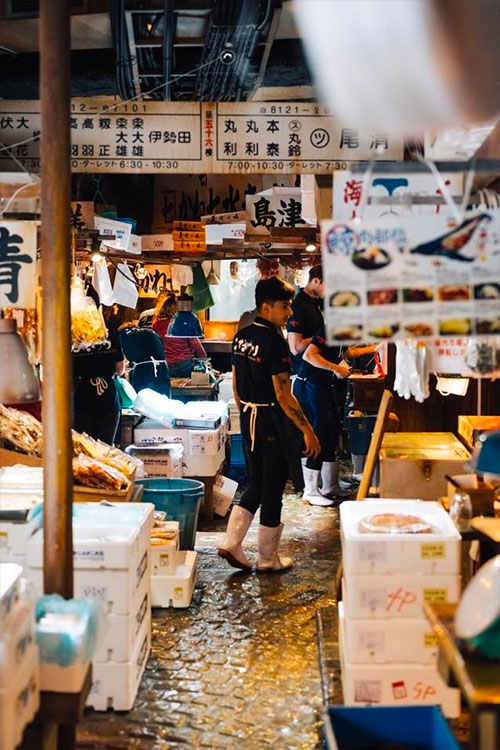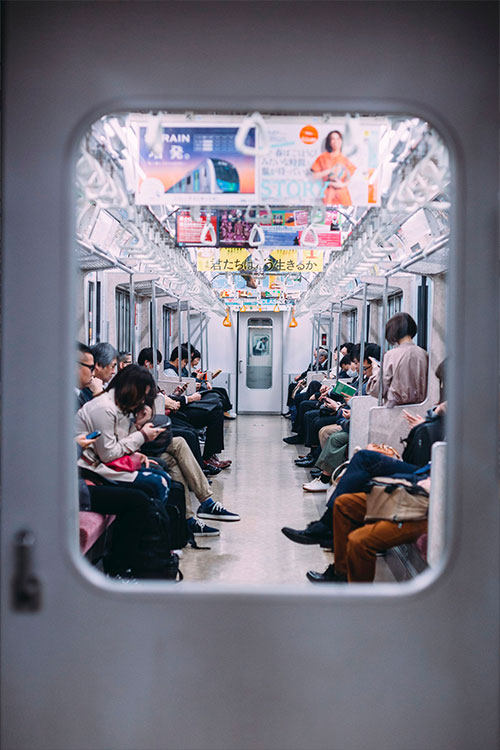Brands
-
45R

The 45-year-old Japanese brand 45R represents the very essence of the concept of “slow fashion”. His creations, meticulously made by hand, are real treasures, which age with their owner. 45R indeed uses a lot of traditional printing and dyeing techniques called basin or Shibori, which it carries out in Yamagata - a small town in northern Japan known for this craft. They allow the hues to fade naturally with time and exposure to the sun, softening the tones, reminiscent of watercolor painting. It takes about a year for garments dyed in such a way to go from design to stores. First of all, everything is drawn by hand, from the piece to the patterns, and orchestrated by Ms. Midori Matsubara, the designer of the house. The designs are then handed over to an engraver, who makes the print frames and sends them to Suzuki Nassen, the small factory of 25 craftsmen, located in this small mountain town of Yamagata. The prints are applied by hand, pressing the frame against a roll of pre-dyed fabric, attempting to maintain uniformity. The basin solution, applied on top, extracts the dye, then the prints are washed away, revealing the patterns. It is 100 times longer than modern screen printing. We are far from the brands that come out of weekly collections! The house even often offers a denim cleaning and color restoration service in its stores.
To treasure old things, old techniques and old sages, such could be their motto. Such attention to detail and passion for craftsmanship comes at a price, but these creations are the ones that keep a living.
-
AMBUSH

Ambush Design Company is created by the duo composed of rapper Vidal and graphic designer Yoon Ahn, a creative studio producing album covers for Japanese artists. In 2004, they founded a jewelry line called Antonio Murphy & Astro. Then in 2008, they launched their second line, AMBUSH®, more experimental and innovative, which was an immediate success. Originally designing giant gold chains, handmade gold-plated chokers and hoodies, the line quickly developed ready-to-wear collections around more conceptual themes for each collection, such as "Nomad" or "Holy Mountain".
-
ATSURO TAYAMA
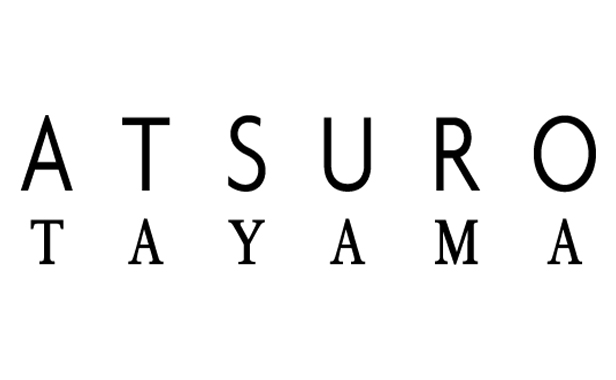
After assisting Yohji Yamamoto for 5 years on his ready-to-wear collections, Atsuro Tayama created his brand and presented his first collection in 1984: a mix of cultures, shapes and materials, playing on folds and volumes, simplicity of shapes and complexity of detail. In 1987, Atsuro Tayama moved to Paris where he opened his first boutique. The fashion capital discovered his creations during his spring-summer ready-to-wear show for Fashion Week in 1991. His sharp style, which is expressed in subtly structured clothes, quickly won over his audience. With its sharp cut edges, sausage hems, flat colors, hybrid models, the shows designed by Atsuro Tayama constantly explore new creative avenues. From 1992 to 2005, he was the artistic director of brands such as "Indivi", "Ozoc", "Boycott", etc.
-
COMING SOON

COMING SOON, described as a “super casual capsule collection,” was launched in 2008 by Yohji Yamamoto and Italian design licensing company Sinv Spa. Keizo Tamoto, then CEO of Yamamoto Inc, described it as “a more affordable line aimed at younger consumers looking to transition from streetwear to more elegant pieces.” Coming from the Japanese house’s ever-fertile and often poetic imagination, COMING SOON distils creations that are both simple and highly technical, relaxed and timeless, feminine and masculine. Anonymous in nature, this is the first Yohji Yamamoto license without the designer's name or signature on the label.
-
COMME des GARÇONS
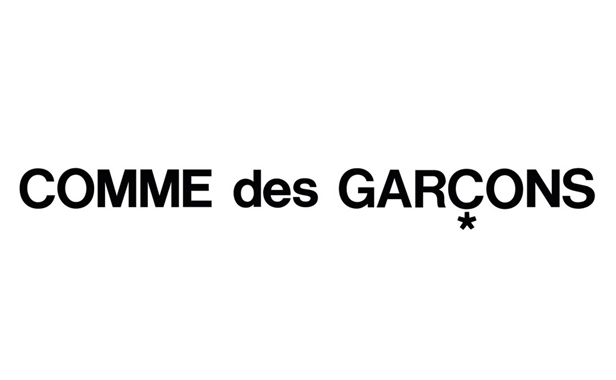
How to talk about fashion in Japan without going through this must-have iconoclast?
Created in 1969 by the Japanese designer Rei Kawakubo, this brand has revolutionized the vision of style, with her visionary intelligence. These are conventions, especially Western ones, on beauty, the construction of a garment and so many others, denounced one by one. A collection presented in Paris in 1981 and success will take root, little by little in the West. Long marked by the exclusive use of black, the collections exploded in color from the mid-1990s; they also use asymmetry in a recurring way and the voluntary degradation of certain models which are perforated or torn. JUNYA WATANABE will join the house later, responsible for the "tricot" line, men's ready-to-wear and his own line for women. Always avant-garde, he is a master in the art of "techno-couture", the meeting between technology and fashion, passionate about materials, cutting and draping.
-
ENGINEERED GARMENTS

The Japanese-American brand ENGINEERED GARMENTS, founded in 2002 by the Japanese designer Daiki Suzuki, combines classic American sportswear and Japanese aesthetics. Influenced by military uniforms and other workwear, the designer reinterprets and designs functional clothing with studied cuts and meticulous details.
The name ENGINEERED GARMENTS comes from a pattern maker working with Daiki, who noticed that the products were "built" rather than designed, like an engineering piece.
-
FACETASM

FACETASM was founded in 2007 by the Japanese designer Hiromichi Ochiai, it has made waves in the industry with its refined craftsmanship and its willingness to experiment with different fabrics and silhouettes. There is no specific style that can be attributed to FACETASM as the brand explores a range of styles and very often merges them to create a new meaning. Ochiai shapes easy-to-wear fashion that borders on the conceptual. With a name inspired by the word facet, FACETASM is a multifaceted brand, based on the idea of unbalancing to find a new balance. As much in its state of mind as its influences.
-
FINAL HOME

FINAL HOME is a project started by Kosuke Tsumara in 1992 with the first nylon jacket. According to Tsumara, the goal of the jacket was to be a "ZERO base piece from which everything begins. With many pockets, each FINAL HOME jacket becomes as individual and unique as its owner."
Prior to his project, Kosuke Tsumura also worked at Miyake Design Studios and participated in several ISSEY MIYAKE collections as an assistant designer. It was in 1994 that his mentor began selling and distributing the FINAL HOME brand internationally.
-
G.V.G.V.
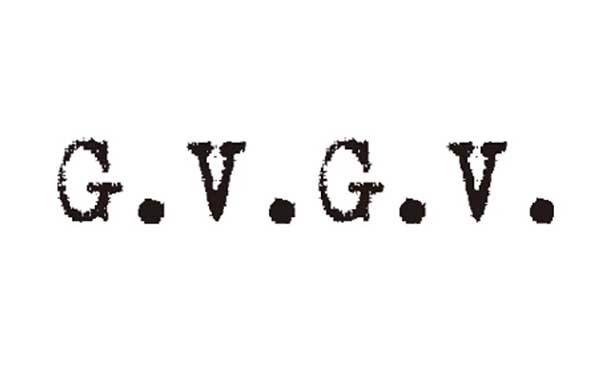
The G.V.G.V. brand was born in 1999, under the pencil of Mug. It's the essence of sleek Japanese style, always practical and with hints of luxury. Natural and delicate textures, fluidity, wide color palettes, sometimes genderless, the brand has made its mark since 2003, the year of its first show at TOKYO COLLECTION. Note a collaboration with Uniqlo and a men's capsule with Opening Ceremony.
-
GANRYU
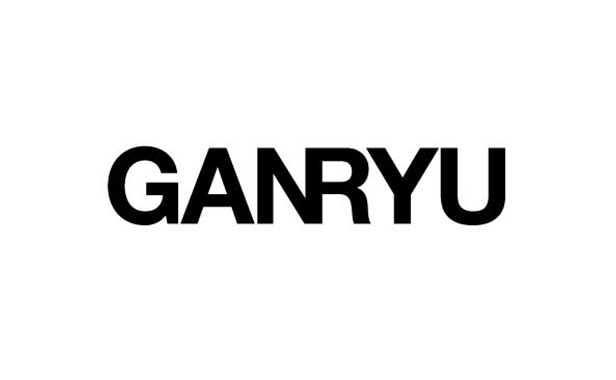
After graduating from the famous Bunka Fashion College, Fumito Ganryu joined the COMME des GARÇONS group as a pattern designer during three years under the orders of JUNYA WATANABE. In 2007, with the backing of Red Kawakubo, he launched his own line GANRYU, following in the footsteps talents like Chitose Abe of sacai and Tao Kurihara of tao (whose label went too soon).
His style is close to the work of Junya Watanabe. Both seemed to take a certain pleasure in taking the most prosaic items of clothing – denim jeans, coach jackets, hoodies – and making them look the same, yet different.
-
IRIÉ
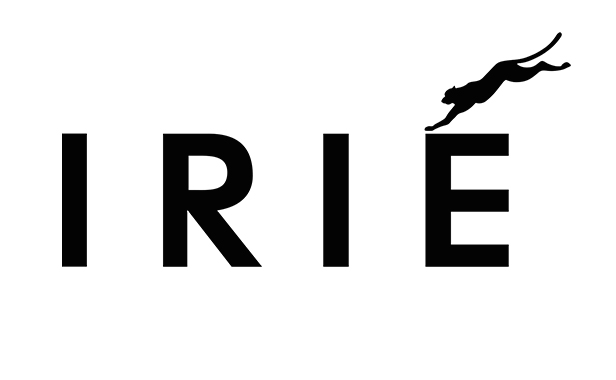
Arrived in Paris by the Trans-Siberian Express with little money and without precise plans, Sueo IRIÉ worked for KENZO Takada from 1970 to 1979, after a brief stint with Hiroko Koshino. He launched his own collection and opened a shop in 1983, on a whim, he said, after buying a Corinthian column at the flea market, which had to be sheltered. Irié, omnipresent, has always kept control of everything. Despite his success, he seems to have voluntarily maintained a human dimension. Its style combines simplicity and efficiency, a form of very raw elegance, adaptable and customizable, for all women. It is also colorful and likes to play with patterns, floral, fancy or animal. Comfort and convenience are always central. Sometimes unusual details, sequins, holographic prints, plastic are added. It's a bit of an idea of effortless Parisian chic for any occasion. He said he was motivated to create clothes that allow a woman to have lunch with her banker in Paris 16th, then drink a hazelnut coffee with Left Bank friends. Its signature material is Irié Wash, soft and light stretch, machine washable. His influences are very French: fascinated by the world of Truffaut and Godard, Parisian life from café to café, he adds a few Japanese notes in the second reading, here and there. His Parisian boutique, all in chrome and mirrors, colored marbles and adorned design, in no way reveals the desire not to develop further, to avoid power games and notoriety problems. We invite you to discover it!
-
ISSEY MIYAKE
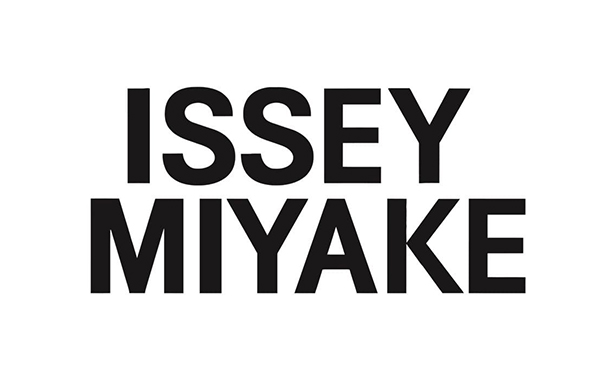
ISSEY MIYAKE was the first to redefine the standards of clothing. His clothing patterns were very different from those of Western style whose classical construction he restructured. He is considered the founding father of this new school of avant-garde Japanese fashion, which was also the school of Rei Kawabuko (COMME des GARÇONS) and Yohji Yamamoto. Issey Miyake claims that simplicity is often the key to wearing his clothes, which are loose and versatile enough to be worn in different ways. He is well known for his original fabrics, including the famous PLEATS PLEASE permanent pleated fabric collection.
-
JUNKO KOSHINO
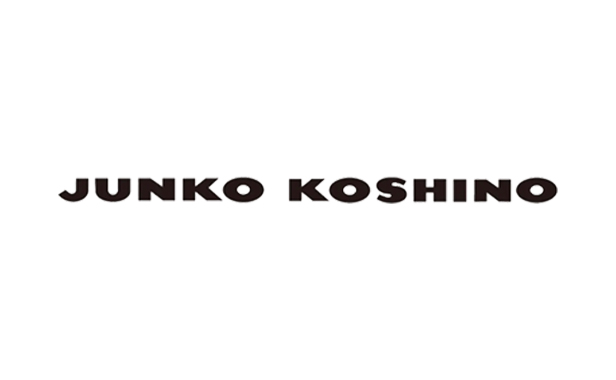
JUNKO KOSHINO is an internationally renowned designer, from a dynasty of women, all rocked by the waves of fashion. Her sisters are none other than the illustrious designers MICHIKO KOSHINO and Hiroko, and her mother, Ayako, is at the head of a retail empire. Born in Osaka, Japan, Junko studied design at Bunka Fashion College and first entered the international fashion scene at Paris Collection in 1978. For several decades, she shared her fashion designs in the around the world, including Beijing in 1985, the Metropolitan Museum in New York in 1990, Hanoi in 1994 and Cuba in 1996, among others.
In 2005, she organized a design exhibition at the Museum of History and the Chinese Revolution in Beijing, and in 2006 she received "Cavaliere dell' Ordine della Stella della Solidarieta' Italiana", a prestigious award on the Italian fashion scene. She was also named an ambassador for “YOKOSO! JAPAN” (Travel Japan) for the 2010 Shanghai World Expo.
Junko Koshino's works are very varied and include the design of opera costumes (“The Magic Flute”, “Madame Butterfly”), or even interior design and decoration.
Koshino frequently uses circles, triangles and squares as creative elements. She sees circles as the symbol of nature, while triangles and squares symbolize human civilization: as these three shapes merge and oppose each other asymmetrically, harmony and balance - exquisite - are created.
-
JUNKO SHIMADA

Japanese designer JUNKO SHIMADA launched her eponymous brand in Paris in 1981. She fell in love with Paris in the 1960s and hasn’t left the City of Lights since. Nicknamed the “most Parisian of Japanese women,” Junko Shimada was first responsible for men’s and children’s ready-to-wear at Cacharel before launching her label. She has a very extravagant style and doesn’t hesitate to create transparent shirts, oversized sweaters, or pumps with inverted heels.
Junko Shimada opened her first boutique on rue Etienne Marcel in Paris in 1984. A second Parisian boutique opened on rue Saint Florentin in Paris in 2001, where you can find the clothes from the designer’s second, trendier line, Junk by Junko Shimada.
-
JUNYA WATANABE

JUNYA WATANABE graduated in fashion from the famous Bunka Fashion College in Tokyo. He joined the Japanese fashion house COMME des GARÇONS and quickly became the protégé of its creator, Rei Kawakubo. Junya Watanabe began his apprenticeship as a modeler. In 1987, he became creative director of the "knitwear" line before being in charge of the men's line. He launched his own line for the house called "JUNYA WATANABE COMME des GARÇONS" in 1992 during a fashion show in Tokyo. He presented it the following year at Paris Fashion Week. Always avant-garde, he is known for doing "techno-couture", the meeting between technology and fashion. He likes to use various materials, create new ways of cutting and excels in the art of draping. He developed a ready-to-wear line for men in 2001, with the creation of "COMME des GARÇONS JUNYA WATANABE MAN", which he presented in Paris.
-
KANSAI YAMAMOTO
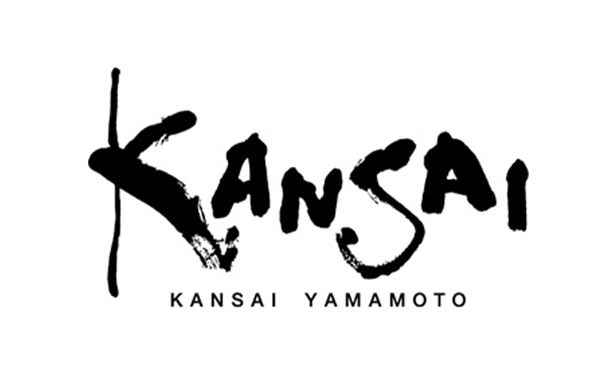
Passed away on July 28, 2020, KANSAI YAMAMOTO is probably one of the most flamboyant creators of his time and his impact is undeniable. He is driven by a philosophy: basara. This Japanese term refers to a colorful and eclectic freedom, bold and luxuriant, the antithesis of wabi-sabi. His joyful and exuberant vision of fashion clashes with the intellectual rigor and abstraction of his contemporaries ISSEY MIYAKE, Yohji Yamamoto and Rei Kawakubo (COMME des GARÇONS). He was the first Japanese to show in London, in 1971, a precursor of the influence of Japanese fashion, reinventing the kimono, defining an extravagant wardrobe, full of references to Japanese culture, such as Kabuki theater. He drew inspiration from traditional crafts (especially decorative braiding), often experimenting with folds and twists to bring his unusual silhouettes to life. Admired by the entire “milieu” and artists, he hosted “super-shows”, which combined fashion, music, dance and sometimes welcomed more than 100,000 spectators. He shared his passion for the spectacle with David Bowie, whom he dressed for many years on his shows. “I think David felt that the energy of my creations contributed to his own energy,” he said. Many have been inspired by his work, starting with Nicolas Ghesquiere for Louis Vuitton, who collaborated with him in 2018 to adorn his creations with yakko faces, from Japanese theater. Rick Owens paid an overt homage to Kansai last year at FW 2020, notably with a striped one-legged jumpsuit with angular shoulders, which was clearly a nod to Kansai’s “Tokyo Pop” jumpsuit. So did Gucci’s Alessandro Michele, with bold patterns and face prints that are characteristic of Kansai’s work.
-
KAPITAL

Americana, the reproduction and meticulous interpretation of American denim, pushed to its paroxysm? KAPITAL is a name considered by purists to be a pillar of Japanese denim. KAPITAL was born in 1984, from the obsessive passion of Toshikiyo Hirata (deceased in April 2024) for the fashion of Uncle Sam's country, after many years spent in the US teaching karate and learning denim manufacturing. Years later, his son Kiro followed in his footsteps in the US and absorbed the same codes. The father-son company, originally called "Capital" in reference to the denim capital, Kojima, was renamed Kapital after Kiro's arrival. In the small prefecture of Okayama, a hub for denim destined for the whole world, the small family business made its nest and grew step by step, to become an empire. Not through fashion shows, not through traditional Haute Couture channels, but through exceptional denims and a strong style, a synthesis between the US and Japanese tradition in terms of dyeing (indigo or khaki for example) and sewing (boro and sashiko, among others), adding complexity and critical depth to the denim environment. Sukajan, embroidery, prints, western tops, workwear and militaria inspirations… KAPITAL is the mixture of opposites, the reconciliation between past and present, a bridge between generations, an alliance between East and West. The graphics are always predominant, the themes addressed very variable (skeletons, smileys, bandana, etc.). The pieces are rare, the productions limited. The mixture of genres and exclusivity, Gaijin Paris loves!
-
Ken OKADA
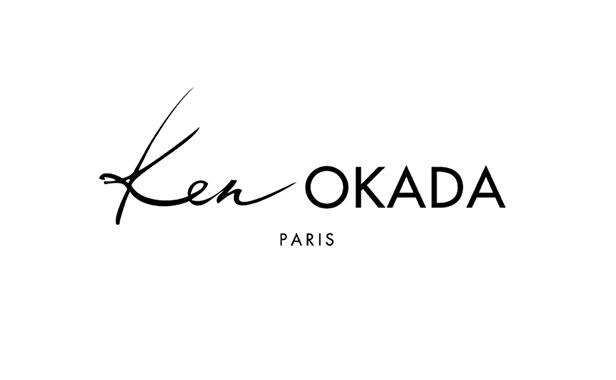
Ken OKADA graduated in fashion from the famous Bunka Fashion College in Tokyo, just like ISSEY MIYAKE and Yohji Yamamoto. Since its creation in 2001, OKADA PARIS has established itself as an iconic fashion house. Perfectly embodying the dialogue between two rich and distinct cultures: Japanese delicacy and Parisian elegance. Then, in January 2005, its first boutique opened its doors in Paris. On the Left Bank, in the beautiful Saint-Germain-des-Prés district.
The aesthetic of OKADA PARIS is rooted in the vision of its founder, Ken Okada, nicknamed "the most Parisian of Japanese women". This visionary designer has managed to bring together seemingly opposing influences to create a style that is all her own. Her iconic shirts, inspired by kimonos and origami, are the perfect example, combining asymmetrical cuts and remarkably precise finishes.
-
KENZO
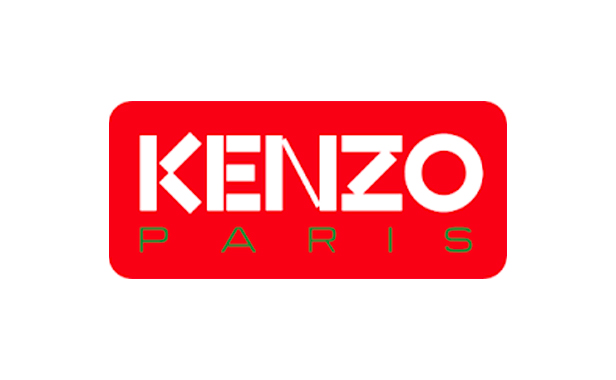
Founded in Paris in 1970 under the name of Jungle Jap, the brand takes the first name of its founder in 1980: KENZO, or the perseverance of a man. "jungle" will remain for one of its women's lines thereafter. Each successful haute couture house has its own style. Kenzo is like its founder Kenzo Takada, it has always developed a style from elsewhere - Japan - and reflects the stubbornness and talent of its creator. A mix of modernity and romanticism, with hints of Western art and Eastern influences. Colourful, ethnic, nomadic fashion. A style inspired by East and West, travel, prints.
-
kolor

kolor is a Japanese brand founded in 2004 by Junichi Abe. After studying at the Bunka Fashion College in Tokyo, he worked at the COMME des GARÇONS design studio with JUNYA WATANABE, which he helped launch its label. During this same period, he met his future wife, Chitose Abe, founder of the brand sacai.
In this vein, the Japanese designer founded the ppCM brand with three partners. But after about ten years, he decided to embark on a more personal adventure by creating kolor, a mixed ready-to-wear label. With a desire to divert the inspirations of the sportswear style into a more contemporary version while adding sophistication with a twist.
"Offbeat", "colorful", "innovative" and "creative" could be the words that best describe the world of Kolor. However, the omnipresent codes of the Japanese brand remain the original finishes mixed with elegant cuts that allow for an unconventional style. The designer likes to combine different textures with different colors in order to enhance an unequaled play of light. The colors are uniform or chosen with the greatest care to bring a natural nuance ranging from indigo to mustard yellow to bronze.
-
Korii Joko International
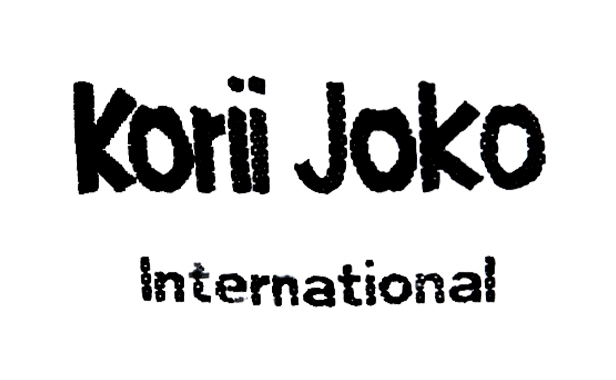
Korii Joko is unclassifiable, halfway between a sophisticated style, a new wave side and the DC burando (COMME des GARÇONS, Yohji Yamamoto and others). She interprets her time in the 80s and 90s in a very unique way. Her clothes are recognizable at first glance. She is often considered to belong, in her own way, to the Japanese avant-garde. She sculpts the female form with concentric circles or adorns it with geometric shapes, enhanced by sought-after materials and transparencies, with which she likes to play. Macrame, embroidery, cordage, lace, organza, silk, texture, yokes, embellishments (beads and other stones), overlays, laser cutouts or sewn finishes, or exaggerated volumes (especially on the shoulders, welcome to the 80s), anything goes. It's so 80's and at the same time so modern. This niche house was mainly aimed at the Western market, from New York to London, via Milan, Paris and Amsterdam, which is why the label proudly bears the inscription “Korii Joko International”.
She more or less disappeared from the face of the fashion world, but in the late 2000s, she launched a line of accessories and jewelry, made of semi-precious stones, Swarovski crystals, pearls and pearls. freshwater or various types of corals. Gaijin Paris loves it! Too bad his talent could not be expressed longer.
-
LIMI feu
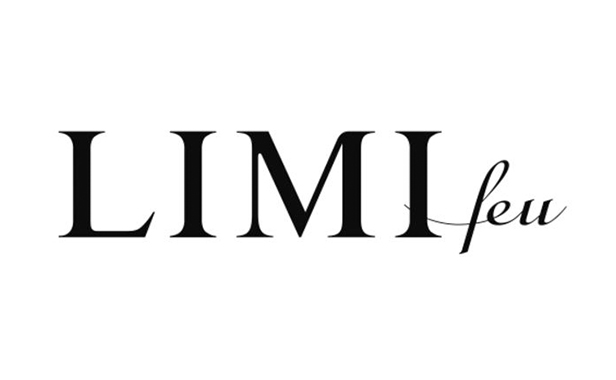
How not to be full of talent with such a heritage? LIMI feu, founded in 2000, is a house whose creator is none other than Limi Yamamoto, the daughter of Yohji Yamamoto. She marched at her beginnings, in Tokyo, then in 2007, decided to parade in Paris. The critics hail it and the clientele follows. Like father like daughter. She is a passionate creator who overflows with energy and talent. Like her father, she loves dark colors, large volumes, and asymmetries, but she is more street and has a more rock attitude, less romantic than him. LIMI feu emphasizes ambiance, volume and comfort by eliminating excess, and deliberately leaves space in garments to allow the personality of the wearer to blend in. The silhouettes are often in a straight line, while combining with voluminous and original drapes that surround the body.
-
Maison MIHARA YASUHIRO
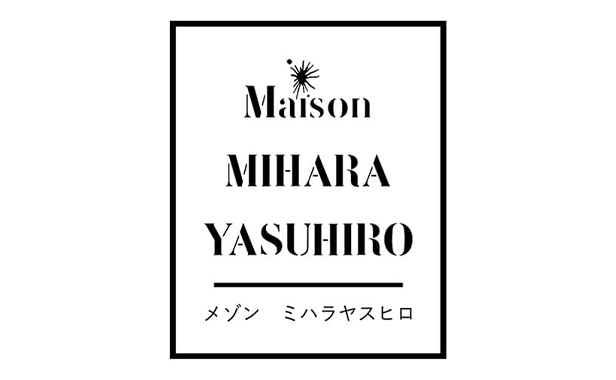
A graduate of Tama University of Fine Arts in Tokyo and passionate about shoes since he was young, it was in 1996 following an exchange in the United Kingdom that Yasuhiro Mihara launched his brand: archi doom. A brand of shoes/sneakers with an avant-garde style that quickly established itself in the world of fashion, between luxury and designer.
Renamed Mihara Yasuhiro in 1997, this name change allowed the brand to be more easily categorized in designer brands, of which it was one. Growing year after year, and being mainly distributed by independent retailers in Tokyo.
It was in 1999 during Tokyo Fashion Week that he launched into clothing, starting with pants, a complementary piece to shoes and subsequently extending to shirts and all the pieces of a complete wardrobe. Yasuhiro's particularity is to choose a designer for each collection, serving as a common thread and inspiration for the collection and the show that accompanies it. A way for him to pay tribute to an important designer and above all to have consistency in his collections. With a strong mastery of layering by superimposing layers of clothing, from several styles and universes, he offers collections with an original but harmonious rendering. Creating surprise at each event.
-
MICHIKO KOSHINO

Born in Osaka, Japan in 1950, MICHIKO KOSHINO is the youngest of three famous Koshino sisters who all became designers (JUNKO KOSHINO and Hiroko), and her mother, Ayako, is the head of a retail empire. Freshly graduated from Bunka Fukuso Gakuin, the Japanese design university, in 1975, she moved to London and quickly established herself, fusing Eastern and Western inspirations in her own way. In particular, she became the queen of club culture, combining urban culture and nightlife, highly colorful and techno creations.
Away from mainstream fashion, it has become cult. In 1987, Michiko Koshino began collaborating with men's clothing brand Motorking; Today they are collector’s items. Its Yen jeans, made only with original Japanese denim, continue to be commercial successes. She also designs t-shirts for the women's clothing brand Q, inspired by street gangs and the urban environment. She also explored cosmetics, underwear, sunglasses and watches. His list of aficionados includes Keith from “The Prodigy”, All Saints, the Spice Girls, Placebo, Talvin Singh and Natalie Imbruglia.
-
noir kei ninomiya
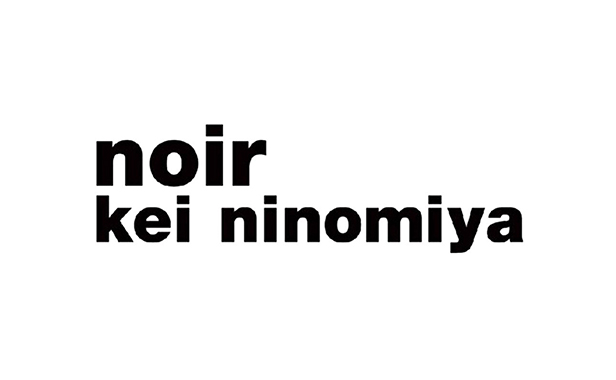
Before joining the prestigious COMME des GARÇONS family in 2008, Kei Ninomiya studied French literature in Japan, an unexpected choice when you know what happened next: the Royal Academy of Fine Arts in Antwerp, then the arrival at Comme des Garçons where he worked as a pattern maker before launching his own collection noir kei ninomiya in October 2012, under the impetus of Rei Kawakubo.
He only uses black and white, and occasionally a bit of gray, but does not imagine using other colors. Because before focusing on shades, he prefers to focus on shapes and creation as such. Laser cutting, metallic elements, refined pleating, experimental knits and other artisanally inspired processes transform tulle, leather, beads and jersey into bold embodiments of a design philosophy rooted in the creative process.
-
Plantation

In 1981, ISSEY MIYAKE launched the Plantation brand, which was born out of his relentless pursuit of textile research. At the time, this was a new type of clothing that was meant to accommodate people’s day to day needs by offering them comfort while still being stylish and unique. The brand featured beautifully designed creations that maintained the essence of handicrafts. The brand’s clothing transcended race, age, and physicality. It was also made from natural materials and constituted simple features and slightly and comfortably loose designs that made it ideal for day to day activities. The line was revived and renamed ISSEY MIYAKE PERMANENTE in 1985.
The plantation brand and its idea may seem simple today, it was out of the ordinary and somewhat rebellious during its introduction days.
-
PORTER YOSHIDA & Co
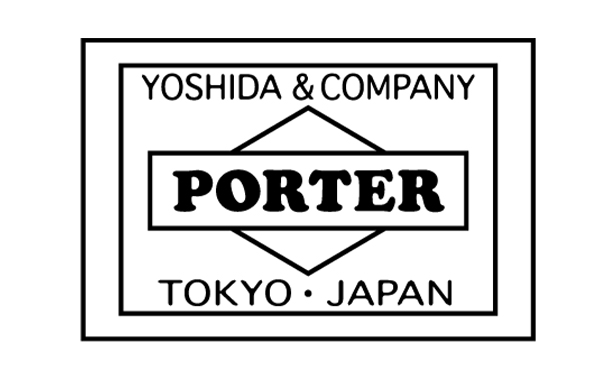
A sought-after brand in France, because it is not widely distributed (you will only find it at a few carefully selected retailers around the world), founded in 1998 by Yoshida Kakan, which offers a wide choice of original and well-designed bags and accessories. Numerous collaborations (Visvim, Murakami, Supreme, Neighborhood).
-
sacai

The enigmatic feminist designer Chitose Abe, having proven herself at COMME des GARÇONS with Rei Kawabuko before going out on her own, in Tokyo in 1999, paraded for the first time in Paris in 2001 She takes her time and likes a form of stability, as opposed to fast fashion. She regularly crosses several garments to give them a haute couture silhouette. And she notably counts Birkenstock and Nike among her recent (and numerous) collaborations. The designer of the most fashionable ready-to-wear labels defines himself as “against the tide”. Deconstructing and rebuilding forever, applying textiles to garments they shouldn't be on, marrying sweaters and jackets or shirts and hoodies, tailoring that can look lopsided or awkward, yet elegant. This breathtaking elegance is what best describes sacai.
-
tao

Tao Kurihara was born in Japan in 1973, graduated from Central Saint Martins College of Art and Design in 1997, and joined COMME des GARÇONS the following year. In 2002, she was responsible for the design of the tricot line. In 2005, Tao Kurihara launched tao with her personal name and released her collection during Paris Fashion Week.
En 2011, tao ceased to exist. Under the umbrella of her mentor and COMME des GARÇONS founder, Rei Kawakubo, Tao showed from a/w 2005 until s/s 2011. Then, in 2021, with nothing more than a whisper, Tricot was rebranded into Tao, and the designer’s eponymous label was revived.
-
TOGA

Designed by Yasuko Furuta, who studied fashion design and drawing at Esmod Japan and Esmod Paris. She founded her first brand TOGA in Tokyo in 1997. TOGA refers to Roman togas, a nod to her passion for draping and pleating. His avant-garde vision combines elements of contemporary Western style and traditional Japanese design to create original and captivating pieces. Its collections combine touches of vintage with modern minimalist shapes. She loves to play with prints and develops a style that combines femininity and relaxation. In 2005, TOGA began presenting its collections in Paris, then in 2014 in London. In addition TOGA, has its line of shoes "TOGA PULLA SHOE", its pre-collection line "TOGA PULLA" and its line of men's clothing "TOGA VIRILIS", as well as unique pieces under the label "TOGA PICTA", distributed only in its own stores.
-
TSUMORI CHISATO
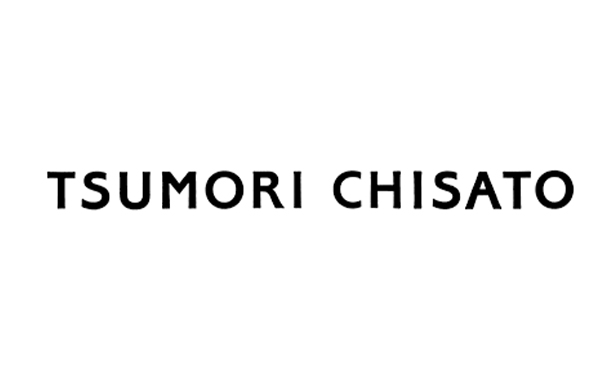
TSUMORI CHISATO fashion at the very prestigious Bunka Fashion School in Tokyo. Alongside other young designers she joined ISSEY MIYAKE Design Company in 1977 as a Head Designer for Issey Sport. She later rebranded it into “I.S. Chisato Tsumori Design”.
With the support of Issey Miyake, she founded her own eponymous house in 1990, which revolves around a playful and imaginative style, both pop and poetic. Energy, colors, kitsch patterns, sometimes childish, a skilful use of accessories, from beads to embroidery, to dress these feminine creations. She is a real “weaver of dreams” (cit. Vogue).
-
UNDERCOVER

Warning! Rare specimen. Revered in the streetwear universe and equally at home in Parisian haute couture shows, the brand is totally hybrid and injected with a good dose of authentic underground Tokyo style. A joyous amalgamation of chaos, determination, fragility, peace and humor, unique to designer Jun Takahashi.
-
Y-3

A hyphen between the brand with the 3 stripes and the world of Yohji Yamamoto. Y-3 has been a cult sportswear and more generally fashion brand since 2001. It was born when the Japanese designer asked adidas to lend him sneakers for his fall-winter collection, the brand being very exposed in Japan. The brand accepted and even offered to imagine with her what the sportswear of the future might look like. Since then, Yohji Yamamoto has been developing his very particular silhouettes, his pronounced taste for black and volumes, but also bright colors, placed on refined materials from hi-tech. Avant-garde, the brand uses materials such as neoprene and specific shapes, multiplies surprising and innovative fashion shows and advertising campaigns, skilfully mixes sport and poetry.
-
Yohji Yamamoto
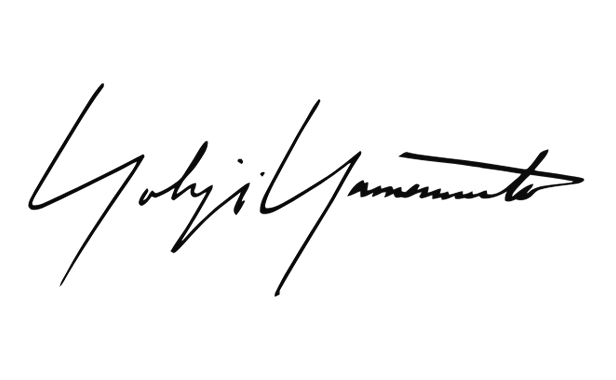
"Hiroshima Chic" was long used to describe the style of the artist-couturier, protagonist of the deconstructionist movement.
Yohji Yamamoto founded his eponymous fashion house in Tokyo in 1972. Ready-to-wear becomes vagabond, black often dominates, clothing is disintegrated, construction questioned, its perennial or perishable side. He deeply marked a generation of Belgian designers.
-
YOSHIKI HISHINUMA
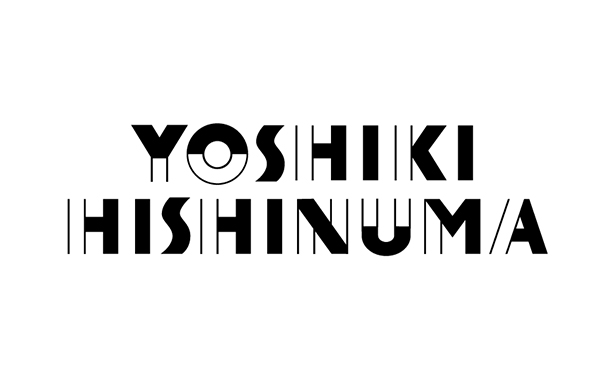
Born in 1958, Sendai City, Japan. graduate from Bunka College of Fashion, which is Japan’s most prominent fashion school, then he started working at Miyake Design Studio, he became a freelance designer, specializing mainly in costume design and costume stage productions. YOSHIKI HISHINUMA started his label in 1992. He is known for producing uniquely shaped clothes using wind and air which, he called “Kite Clothes” and “Air Clothes”, as well as integrating technology into traditional Japanese tie-dye designs. He also designed many other costumes with highly original shapes.
-
ZUCCa

Since his first show in 1988, Japanese designer Akira Onozuka has woven a long process of maturity. From his apprenticeship with Issey Miyake from the 1970s, he has retained a strong taste for the creative process. The Zucca universe is all in color, its clothes are practical to wear and come from urban fashion. The clothes are perfectly designed. Zucca opened its first store and developed the Cabane de Zucca line in 1993 in Tokyo, with creations for men, women and children and collaborations with artists of all kinds, who designed windows or interior decoration. In 1994, the brand launched a new line, Zucca Travail, which it described as "work wear for the inactive" which was inspired by work clothes, uniforms and sportswear. This collection is made in France and has even been awarded for its contribution to the manufacturing industry in France. In 1995, Zucca began collaborating with the watch manufacturer Seiko and released one collection per year of watches with gourmet names like Chocolate or Chewing Gum and with an original design. Today, the world is a playground from which the creator draws his many inspirations.











